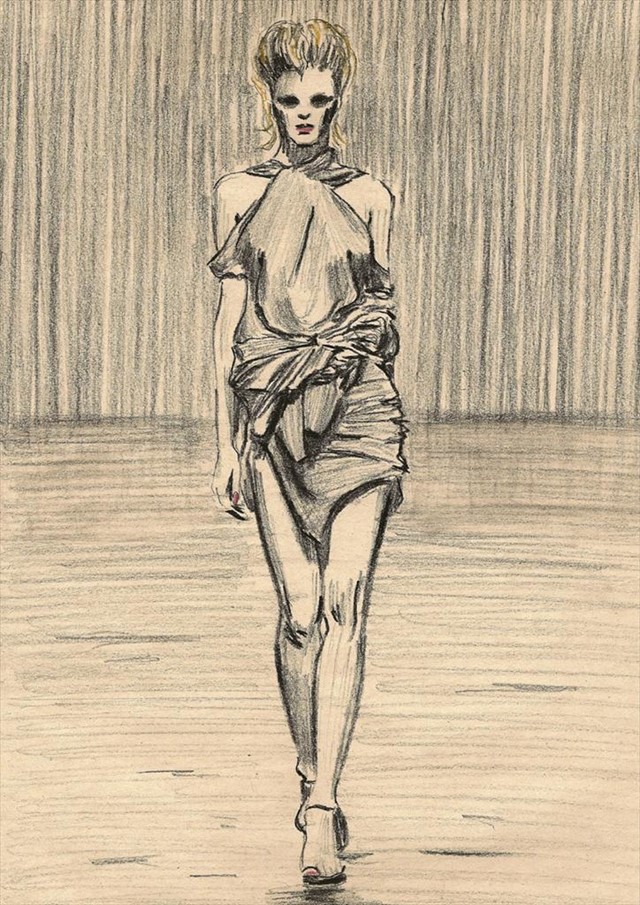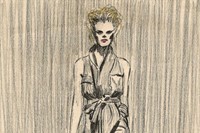We analyse Haider Ackermann's draping prowess

For all its esoteric nuances, fashion likes boundaries: trousers are formal, or relaxed; a dress is for day, or for night. None of this smart casual hokum, if you please.
Until, of course, one considers the art of drapery. Haider Ackermann showed great sweeps of silk, leather and yarn this season, unadorned but for a twist or tuck here, a fishtail or a diametric cascade from one side of the body to the other.
Unique in its combination of structure and formlessness, draping gives instant and fluid definition to otherwise flat fabric. But that fluidity is contrived right down to its very artlessness. In short, drapery is one of fashion's great contradictions.
Literacy and numeracy aside, the ancient Greeks also gave us casual elegance. The classical chiton consisted of squares of material pinned to create form, a simple shape which resurfaced during the 19th century neo-classical revival. It made its dance-floor debut in Studio 54, where the most up-to-the-minute drapes could be found courtesy of Halston during the 70s. By pinning and tucking, he fused casual jersey with a more obviously occasionwear silhouette and struck a note with his laissez-faire brand of glamour.
Not so at Sophia Kokosalaki though, whose idiosyncratic melding of flowing femininity with modern tailoring takes a more architectural approach, or at Rick Owens, whose dark drapes re-invented notions of romance. Nicolas Ghesquière at Balenciaga is a master of drapery, whether he chooses to suppress fluidity by stitching folds close about the body, as for S/S03, or to mock the technique's cocktail-hour connotations with last autumn's geometrically exact pink silk incarnation.
Whether highlighting or concealing the figure, creating or softening form, drapery may look easy, but rarely is it just hanging around.
Harriet Walker is a fashion writer at The Independent
Zoë Taylor graduated from the Royal College of Art in 2009. Her work has appeared in Le Gun, Bare Bones, Ambit and Dazed & Confused. She is currently working on her third graphic novella and an exhibition



